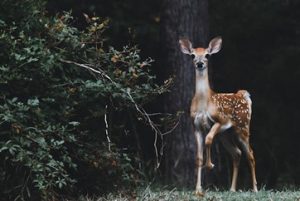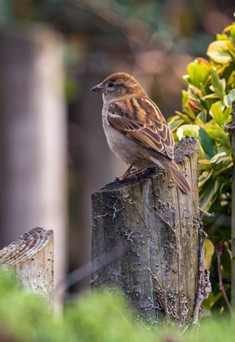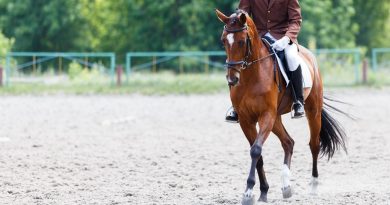Angelo Dellomo of Mays Landing Discusses How to Identify and Appreciate Native Species in Your Area
Angelo Dellomo of Mays Landing, a passionate nature lover and outdoorsman, shares his expertise in this article on how to observe wildlife responsibly. Below, Angelo Dellomo offers tips on where to spot various species and engage with them respectively.
Exploring local wildlife is a captivating way to connect with nature, learn about your environment, and support conservation efforts. Whether you’re a seasoned naturalist or a curious beginner, identifying and appreciating native species can be an enriching experience.
Angelo Dellomo of Mays Landing on Understanding Your Local Wildlife
Before embarking on your wildlife adventure, it’s essential to familiarize yourself with the native species in your area. Local wildlife varies greatly depending on your region, climate, and habitat types. Understanding what species inhabit your area will help you know what to look for and where to find them.
- Research Local Species: Start by researching the common wildlife in your region. Field guides, local wildlife organizations, and nature apps can provide valuable information about the species you might encounter.
- Join Local Wildlife Groups: Many areas have wildlife clubs or organizations that offer information on local species and their habitats. Angelo Dellomo of Mays Landing suggests joining these groups can provide access to expert knowledge and guided wildlife tours.
- Use Nature Apps: Smartphone apps like iNaturalist or Seek can help you identify species in real-time. These apps allow you to take photos of plants and animals and receive identification and information on their habits.
Tips for Spotting Local Wildlife
Angelo Dellomo of Mays Landing explains that knowing where and when to look for wildlife can greatly enhance your chances of spotting and identifying different species. Here are some tips to help you in your quest:
- Choose the Right Time: Wildlife activity often peaks during certain times of the day. For many species, dawn and dusk are the most active periods. Early mornings and late afternoons can also offer prime viewing opportunities.
- Explore Diverse Habitats: Different species thrive in different habitats. Explore various environments such as forests, wetlands, grasslands, and urban areas. Each habitat supports unique wildlife.
- Look for Signs of Activity: Even if you don’t see the animals themselves, look for signs such as tracks, nests, or droppings. These indicators can help you understand which species are present and where they might be found.
- Be Patient and Quiet: Wildlife observation requires patience. Move slowly, speak softly, and avoid sudden movements to avoid startling animals. Quietly observing from a distance can increase your chances of seeing wildlife up close.
Identifying Local Species
Once you spot wildlife, identifying them accurately is crucial for appreciating their role in the ecosystem. Angelo Dellomo of Mays Landing discusses how to identify and learn more about the species you encounter:
- Observe Physical Characteristics: Pay attention to key features such as size, color, markings, and behavior. For birds, note their plumage patterns and calls. For mammals, observe their fur patterns and size.
- Use Field Guides: Field guides specific to your region can be incredibly useful. These guides often include photos and descriptions of local species, helping you identify them accurately.
- Take Photos: If possible, take photos of the wildlife you encounter. This will allow you to compare your observations with images in field guides or online databases later.
- Consult Experts: If you’re unsure about a species, don’t hesitate to reach out to local wildlife experts or online communities. Experts can provide valuable insights and help with accurate identification.

Observing Wildlife Responsibly
Responsible wildlife observation is essential for ensuring the well-being of animals and their habitats. Follow these guidelines to observe wildlife ethically:
- Maintain a Safe Distance: Angelo Dellomo of Mays Landing says to always observe wildlife from a safe distance to avoid disturbing them. Use binoculars or a telephoto lens to get a closer view without intruding on their space.
- Avoid Feeding Wildlife: Feeding animals can disrupt their natural behaviors and diet. It may also lead to dependency on human food, which can be harmful. Let wildlife find their own food.
- Respect Nesting Sites: If you encounter nesting sites or dens, avoid disturbing them. Birds and mammals need a safe and undisturbed environment to raise their young.
- Leave No Trace: Follow the Leave No Trace principles by minimizing your impact on the environment. Avoid trampling vegetation, and dispose of waste properly.
- Educate Others: Share your knowledge and experiences with others to foster a greater appreciation for wildlife. Encourage friends and family to observe wildlife responsibly and support conservation efforts.
Supporting Wildlife Conservation
Angelo Dellomo reports that your observations and appreciation for local wildlife can contribute to conservation efforts. Here’s how you can get involved:
- Participate in Citizen Science: Many organizations involve the public in wildlife monitoring and research. Participating in citizen science projects helps collect valuable data for conservation efforts.
- Support Conservation Organizations: Donate to or volunteer with local wildlife organizations that work to protect habitats and species. Your support can make a significant impact on conservation efforts.
- Advocate for Wildlife Protection: Raise awareness about wildlife conservation issues in your community. Advocate for policies and practices that protect natural habitats and promote sustainable practices.
Conclusion
Angelo Dellomo of Mays Landing concludes that exploring and appreciating local wildlife offers a rewarding connection to nature and fosters a deeper understanding of the world around us. By researching local species, using the right techniques for spotting and identifying wildlife, and observing responsibly, you can enhance your wildlife experience and contribute to conservation efforts. Remember, each encounter with wildlife is an opportunity to learn and appreciate the delicate balance of nature. Enjoy your journey into the wild and make a positive impact on the environment and its inhabitants.






